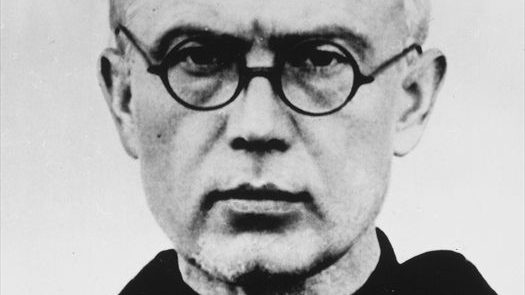When St. Maximilian Kolbe was a child, he prayed to the Virgin Mary for guidance, and she appeared to him, holding two crowns: a red one representing martyrdom and a white one for purity. She asked him which one he wanted, and he chose both.
At the age of 13, he entered the minor seminary of the Conventual Franciscans. He made his vows at age 20 and earned a doctorate in philosophy. Not long after, he suffered from chronic tuberculosis, which left his lungs very weak.
In 1917, Maximilian formed the Militia Immaculata. In Poland, he evangelized through newspapers and magazines, spreading the Catholic faith. He spent time establishing a Catholic press in Japan, returning to Poland in 1936.
In 1939, Germany invaded Poland, and Maximilian was arrested. He was freed long enough to publish one last issue of his paper, but he was arrested and taken to Auschwitz in 1941.
That year, 10 prisoners were sentenced to death by starvation because another prisoner had escaped. Maximilian volunteered to take one man’s place, because the man had a wife and children. He led the other prisoners in prayer and hymns for two weeks, inspiring everyone in the camp.
On August 14, the camp officials decided to hasten Maximilian’s death, and injected him with carbolic acid. His body was cremated on the feast of the Assumption.
St. Maximilian is remembered as a “martyr of charity,” and was canonized by Pope John Paul II in 1982.

